Gareth von Kallenbach (980 KP) rated The Raid 2 (2014) in Movies
Jun 19, 2019
Thanks in large part to DVD, the film gained a larger audience thanks to word-of-mouth and now the second in a planned trilogy has been released which ups the action to new levels of hyper connectivity and ultraviolent action.
The Raid 2: Berendal” takes place shortly after the events the first film where officer Rama (Iko Uwais), learns that his exploits in surviving the first film have only increased the danger facing him and his family as the corruption he exposed has made him a target with much more dangerous criminals higher up the food chain. Although he barely survived the events of the first film, Rama agrees to go undercover in a brutal prison in order to keep his family safe and get close to a key individual whose father is one of the biggest crime lords in the region.
His amazing combat skills are tested early and often in prison yet Rama is able to achieve this objective and becomes trusted associate in the crime syndicate following his release thanks to the contacts he made during his incarceration.
Unfortunately for Rama a power struggle is enfolding between son and father as the ambitious son is eager to take a larger slice of his father’s empire even if it means declaring war on the rival families. The film spends a good part of its first hour introducing the characters and setting the tables for the final hour as it intersperses a few fast and brutal fight sequences between.
The final 45 min. the film are essentially one extended fight scene after another that is utterly captivating to watch and despite it’s at times graphic brutality, impossible to look away from. Like the previous film, the speed, precision, originality, and choreography of the fight sequences are truly unique and have set new standards for martial arts films to follow.
While the film is presented in the native Indonesian language with English subtitles, it is very easy to get drawn into the dark and deadly world in which the characters find themselves. Uwais proves that he’s more than just a skilled screen fighter as he infuses Rama with the complexity of the man driven by duty yet utterly devoted to keeping his wife and newborn son safe even when the cost puts him in constant danger and forces him to be away from them for long periods of time.
Evans keeps the action flowing and time and time again aside from the clever way that he introduces what would only be disposal characters by giving them unique and at times charming quirks and characteristics, produces action sequences that leave you wondering how they were able to film them and what kind of person would think up such sequences. My wife commented to me that her blood pressure my surely have been rising from the relentless pacing and nonstop action and tension of the film and the constant barrage of action scenes that while brutal never become repetitive or gratuitous.
The film will not be for everyone as the action is quite brutal and times graphic however the free-form choreography that made the original so memorable has been taken to new levels in the sequel which keeps the action fresh as much as the story and characters keep you riveted during the non-action segments of the film .
All I could say the film is not one for the masses I can easily say this is one of the more enjoyable and better films of the year to date and is one that should not be missed especially if you’re a fan of police dramas or action films.
http://sknr.net/2014/04/11/the-raid-2-berendal/
Darren (1599 KP) rated 300: Rise of an Empire (2014) in Movies
Jun 20, 2019
I think we go prequel with Themistokles (Stapleton) leading the Greek army back against the Persians before they can take any of the Greek cities. The battle leads to the death of King Darius (Naor) leads to Artemisia (Green) and Xerxes son of Darius go on the revenge mission with Xerxes entering into the world of the Gods becoming a God King.
Themistokles goes to Sparta to build a united Greece while Xerxes is waiting for word from the messenger sent. We learn of Artemisia is Greek by descent and is out for revenge on any Greek person she finds after they raped and murdered her whole family. Themistokles builds his navy army for a battle on the sea against the Persian fleet leading to epic battles on the ocean. What follows is a string of battles each one with the other trying to get the upper hand.
Suffering a defeat Themistokles uses his defeat and the Spartans defeat as fuel to unite Greece once and for all as they take the battle to a conclusion once and for all.
300: Rise of an Empire does play the idea of following another side of the battle really well, mixing between the prequel elements and sequel elements. The main problem is that the scenes of the battles come off very confusing which is the main reason for the story. It does show the new historical legends even though they are lesser known names. It really ends up feeling like a forced sequel that has come too late after the first one. I feel this focuses too much on its action sequences and the story falls into the background after a while. (5/10)
Actor Review
Sullivan Stapleton: Themistokles Greek warrior who leads the navy fleet into battles on the sea against the Persians after he kills their King Darrius. Sullivan does give a good performance and looks the part. (7/10)
themstokles
Eva Green: Artemisia leader of the Persian naval unit who also plays Xerxes to go into combat the way she wants to win the war. Eva gives a good performance and makes for a great villainous role. (7/10)
green
Rodrigo Santoro: Xerxes God King of Persia who is at battle with the Spartans and the Greeks. Rodrigo gives a solid performance and has to get praised for the look he ends up having after the makeup. (7/10)
erxes
Support Cast: 300: Rise of an Empire has a huge support cast that are all warriors in either side of the battle.
Director Review: Noam Murro – Noam does a solid job directing making the action look very good but doesn’t pull the story through as much as he should be. (6/10)
Action: 300: Rise of an Empire can’t be denied about how good the action is even if the naval moments come off confusing at times. (8/10)
War: 300: Rise of an Empire really is one of the war films that really do end up putting the fantasy into legend. (7/10)
Settings: 300: Rise of an Empire creates settings that look the part for the time of the battles. (7/10)
Special Effects: 300: Rise of an Empire has great effects at time but slowly start to feel over used. (7/10)
Suggestion: 300: Rise of an Empire is one to be watched if you enjoyed the first one but not the most interesting for the first time viewer. (Fans Watch)
Best Part: Final battle looks good.
Worst Part: A Horse on a boat, really?
Action Scene Of The Film: Final Battle.
Believability: No (0/10)
Chances of Tears: No (0/10)
Chances of Sequel: Left open for another sequel.
Post Credits Scene: No
Oscar Chances: No
Box Office: $337 Million
Budget: $110 Million
Runtime: 1 Hour 42 Minutes
Tagline: Seize your glory
Trivia: The original script featured King Leonidas from 300 (2006), but he was ultimately cut out. This was due to Gerard Butler, who turned down to reprise his role as Leonidas, since it “wasn’t really [his] thing”.
Overall: Sequel we didn’t really need
https://moviesreview101.com/2015/05/17/300-rise-of-an-empire-2014/
Darren (1599 KP) rated Iron Man 2 (2010) in Movies
Oct 24, 2019
Performances – Robert Downey Jr is still great to watch, he keeps the charisma required for his role, while bringing an emotional factor which is needed for where his character goes in this film. Gwyneth Paltrow does have a bigger role here and brings us a much stronger performance with her character. Don Cheadle is an improvement on Terrence Howard, bringing Rhodey to life more. Scarlett Johansson has the perfect look for this character which is only first jumping into the franchise. Sam Rockwell as another inventor arms dealer who is filled with the swagger required. Mickey Rourke as the villain has good motives he does everything he can even if he character does grumble a lot.
Story – The story follows up the beginning of Iron Man dealing with the idea that the military would want control of the equipment and the rest of the world will be playing catch up, with their own versions of the Iron Man suit. This is a strong world building exercise to the Iron Man universe, we get to see how SHIELD are operating in the shadows watching over the potential threats. We have a villain that is competition and another one that is out for personal revenge. We up the stakes in this one, Tony does have to deal with his own problems by needing to improve the suit and we get to set up the position of who is one the good side with teases of the eventual Avengers team up.
Action/Sci-Fi – The action in this film relies on a couple of big scenes, we have the racing introduction, the mid-life crisis sequence and the showdown, each has their own way to make an impact. The sci-fi side of the film continues to show the technology advances that Tony is dealing with.
Settings – The film uses the settings more for the action with one of the most iconic action sequences in the franchise, we continue to see Tony’s lab which tends to get destroyed a lot too.
Special Effects – The special effects in the film make each fight, drone or Iron Man suit look realistic through the film which is what needed for the film.
Scene of the Movie – Monte Carlo entrance.
That Moment That Annoyed Me – There is a small pacing issue.
Final Thoughts – This is a fun sequel that continues to build the universe we know now, Tony still needs to learn about his place and how to handle the suit which is important and shows the past could come back to haunt you.
Overall: Fun sequel.
Ross (3284 KP) rated Cold Iron (Masters & Mages #1) in Books
Jan 22, 2019
The story that is told is how Aranthur, this young man (selected from his village to attend the big city university) finds himself in the midst of conflict and significant events in the empire's changing status. The idea of fate dictating that this one man would be at the centre of things (see Wheel of Time) is not one that is explored here. While it is hinted at (he is frequently told off for ending up in unusual circumstances), it isn't overly laboured. Nobody tells him he was chosen or anything like that. Instead he gradually learns that he has found himself at the centre of political intrigue, plotting, counter-plotting, conspiracies and war.
This book is not about Aranthur. He is just the focal point of the book, the story is so much bigger than him. This meant it did at times become a little hard to take that he always just happened to meet the right person, go to the right place at the right time in order to witness or participate in a number of significant plot events. In hindsight, this is largely all explained as some hidden agenda and him being put in those places to make those decisions but at the time it was a little jarring.
The narrative is more akin to Robert Jordan than many contemporary writers - so much overly elaborate description of people, places, clothes, horses, weapons etc. At times this adds to the reading experience but I found it over-used and made the book feel like a much longer read (I was shocked when I found out it was just under 450 pages - it reads like around 700). Also, so much of the narrative is in either italics (to show it is a magic/majick/magik delete as appropriate) or is in some odd variation of French ("gonne" for gun, "quaveh" for coffee etc) to become irritating. At times the book is more like a decent fantasy tale or conspiracy and intrigue which has been edited by a historical re-enactment nut. Given this is fictional and the world is the author's to do with as he wishes, forcing some historical accuracy at the expense of reader enjoyment seemed an odd decision to make.
The magical system seems fairly standard fantasy fayre, albeit it is not described or explored in any detail, people just suddenly do things which haven't previously been mentioned. A large aspect of the book is Aranthur's being chosen to translate an ancient text to decode the magical secrets hidden there. I think in all he decodes three of these, and uses them, but there is no mention of them until he has to use them in a fight. It could just be that I have been reading a lot of LitRPG recently, where every spell is described in intimate detail and its uses are discussed way in advance of being needed in combat, but I felt like it was something of an afterthought or rescue from a plot dead-end ("oh sod it, say he done a magic").
While I did enjoy this book on the whole, the narrative style and the focus being on clothes rather than describing the interesting aspects of the world were to its detriment. Also, the book is written as two "books" (chapters), the first "book" covers around 80% and all in one long chapter without breaks. To my mind, ending there would have sufficed. The final 20% in "book 2" felt like part epilogue, part sequel and should maybe have been split as such.
My advice to anyone reading this, is to suspend disbelief that little bit further and trust that things do largely get explained satisfactorily before the end.

Ultimate Lion Simulator
Games and Education
App
Jump into a brand new adventure as a ferocious Lion! Brave a dangerous new world to claim your place...
Gareth von Kallenbach (980 KP) rated Call of Duty: Black Ops Cold War in Video Games
Nov 21, 2020
Unlike Black Ops IIII, Cold War features a campaign and it is one that offers players side missions, alternate in-mission objectives, dialogue options, and differing endings.
Set in the 80s but jumping in time to Vietnam and other timeline events; the player is cast as an operative named Bell. Players have the option to customize their character in terms of name, gender, backstory and such but it does not play much into the game as “Bell” is what players are known by.
From Eastern Europe, to Vietnam, Cuba, and other locales, the game includes 80s technology and music as players must stop a Soviet General named Perseus from unleashing a Nuclear onslaught.
As fans of the series can guess; players will undertake various missions using combat, stealth, infiltration, elimination, recovery, and more to save the day. There are all sorts of weapons for players to select from ranging from Western to Eastern and allows players to experience a variety of options from sniping, run and gun, and even a Bow.
Vehicles also play a part of the game but they are more heavily featured in the multiplayer portion of the game.
The game does offer variations on the ending based on a player’s choice of completing side missions and choices they make along the way and the game also offers players the chance to grab enemies and use them as a shield in taking on enemy fire. This is one option I would love to see appear in multiplay.
The graphics are solid and some of the landscapes from jungle to frozen tundra really stand out as I was playing on an EVGA 2700 GTX card. The game was also considerably more stable than Modern Warfare was at launch as I did not encounter any issues with my gameplay.
At first I thought the campaign was short but I later realized I had become so engrossed in it that I mistakenly thought so. The levels do offer some real treats which I would love to discuss but do not want to spoil.
Multiplay is the bread and butter of the series as it is what drives the popularity of the series along as players will spend countless hours leveling up, customizing, and playing the various maps and modes as new content arrives until the release of the next game in the series.
Some have complained that the maps are a bit sparse and uninspired but I have enjoyed my time in the multiplayer and enjoy the fact that I can now select only the modes I wish to play for Quickplay to avoid being placed in a mode I do not wish to play.
The Co-Op Mode I enjoyed so much in Modern Warfare is gone this time around in favor of a Zombie mode and while it does not shake things up much from the prior Zombie offerings; it does offer plenty of entertainment and I look forward to seeing more content in the future.
There is an Assault mode where players can use vehicles ranging from Tanks, Snowmobiles, Jet Skis, Gun Boats and more which adds to the fun as ramming your ride into a landing area which an explosive attached is great fun.
The only issue I had with the game was with Warzone as attempting to launch it took me to desktop and out of the game so hopefully this will be smoothed out soon as new updates are already out for the game and next week will see the return of the popular Nuketown map which now is updated to 1984.
In the end Black Ops Cold War does not reinvent the franchise but rather gives players more of what they have come to expect with a few new wrinkles to the mix.
4 stars out of 5
Eleanor Luhar (47 KP) rated Nothing Tastes as Good in Books
Jun 24, 2019
So Annabel is dead. I'm studying The Lovely Bones at school so the whole beyond-death narration isn't that special to me now. But Hennessy does it pretty differently to Sebold.
We don't know much about Annabel, not at first. But we begin to learn about her while she helps her assigned "soul-in-need" - The Boss (definitely not God) has promised her a final communication with her family if she helps Julia. And this looks easy, at first - Julia is from Annabel's old school, with a loving family and good grades. Everything is fine, except she's fat. Annabel thinks this should be easy - after all, she's an expert in weight loss. She lost weight until she died.
But Annabel soon finds out that Julia's issues are a whole lot more complex than her weight. At first, losing weight helps. But then her old scars come back to haunt her, and Annabel realises that maybe losing weight isn't going to fix all her problems.
Aside from the obvious issue, this book does talk about a lot of important topics. It covers friendships and relationships, like most YA novels do, but it also combats ideas on feminism, affairs with older men, and people all having their own hidden demons.
At first, I wasn't keen on Annabel. I wanted to like her - I felt I should, because I could relate to her story so much. But she was a bitch. She wanted other people to be like her, and rather than encouraging recovery and health and happiness, she shared tipped on weight loss. It really did hurt to read. Her ideas on "perfection" and being weak for eating just really hit a nerve for me. Not because it was wrong (though I'd never encourage an eating disorder in someone else), but because it's exactly how I'd think about myself. Her behaviours, her worries, her anger - they were so real.
But Annabel, despite being dead, grows alongside Julia. Yes, she tells Julia to starve herself and run on an empty stomach and hate herself, but eventually she starts to feel for her. She wants Julia to combat her issues, to actually be happy. And she realises, despite having been so upset with her old friends for recovering, that maybe she wasted her life. Maybe she could have been something more, rather than striving to be less.
I found this really emotional. Annabel's love for her sister, the sister she neglected for years while she was focused on her goals, and the future she cut short. The way Julia's life changed when her passion for writing and journalism was overtaken by her obsession with food, calories, exercise. It's so real and so sad. And the ending isn't "happily ever after" - Annabel's still dead, Julia's in counselling - but it's real. It gives hope that things can change, that Julia can really achieve happiness.
At first, I didn't like this that much. I know Annabel is just a character, but I just didn't like her. She was one of those girls that makes anorexia sound like a choice, a lifestyle, and I hated that. But later she realises she is sick, and I actually felt sorry for her. I was sorry that she had been brainwashed by her illness into believing she was doing what was right.
The only reason I'm giving just 4.5 stars to this book is because Annabel was a bitch. Yes, she is a character, and yes, she grows considerably throughout the novel, but her encouragement of EDs just drove me insane. Personal pet peeve, I guess.
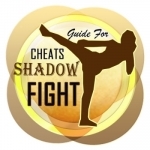
Cheat Guide for Shadow Fight 2 Titan Mod
Reference and Book
App
Already a Fan looking for how to be titan in shadow fight 2? and Are you always lose fight with the...
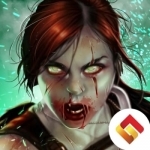
Zombie Hunter: FPS Apocalypse
Games and Entertainment
App
The new real zombie war game with incredible 3D graphics. Your goal is to survive from the undead...

Ultimate Wolf Simulator
Games and Education
App
Jump into a brand new adventure as a wild Wolf! Survive in a massive world of wilderness that’s...
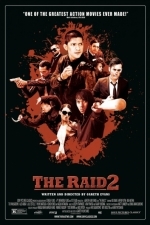

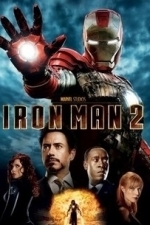
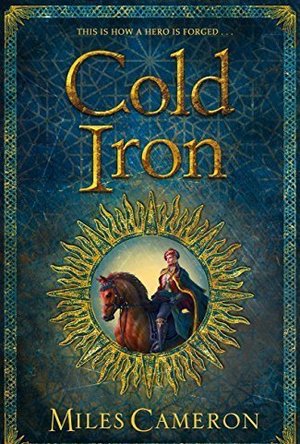
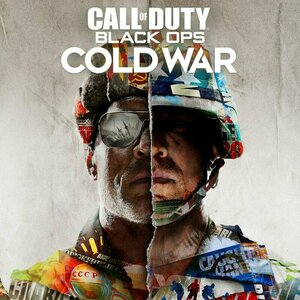
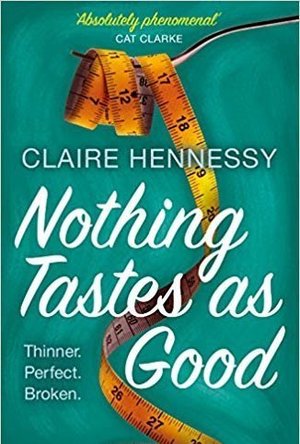
Andy K (10823 KP) Jul 29, 2019